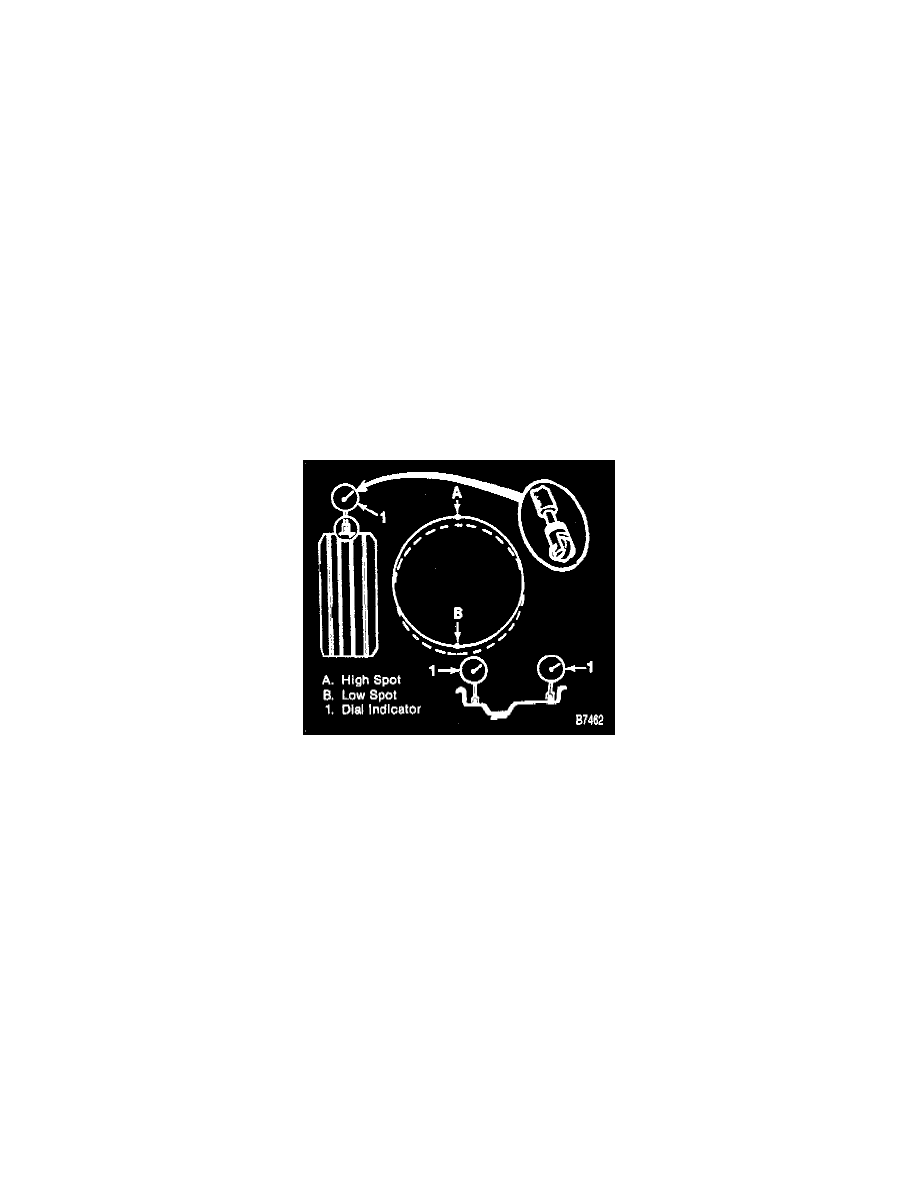C 2500 Truck 2WD V8-5.7L VIN R (1997)

CAUTION: The use of aftermarket reverse-type wheels, designed to extend the wheel away from the body, will Increase the scrub radius. An
Increased scrub radius may greatly Increase steering effort and reduce hub bearing life.
General Information
Some vehicles are sensitive to tire and wheel assembly runout. Tires that are satisfactory on one vehicle might be unsatisfactory on another. When
analyzing vibration problems, it is important to keep this in mind. In addition, different wheel positions on a vehicle may have different sensitivity levels.
You should check for wheel runout or total wheel and tire runout in the following cases:
a. If the tire and wheel vibration occurs below 40 miles per hour.
b. If all wheels are balanced and a vibration occurs.
c. If there appears to be a bulge in a tire or an out-of-round condition as a tire rotates on a balancer.
d. If any wheel damage is noticed.
e. If there is a poor wheel fit on the hub and the vehicle exhibits vibration.
Measuring Wheel and Tire Runout
Wheel runout should be measured with an accurate dial indicator. Measurements may be taken with the wheel installed on the vehicle, or off the vehicle
using an accurate mounting surface such as a wheel balancer. Measurements may also be taken with or without the tire mounted on the wheel.
Radial runout and lateral runout should be measured on both the inboard and outboard rim flanges. With the dial indicator firmly in position, slowly
rotate the wheel one revolution and record the total indicator reading. If any measurement exceeds specifications, and there is a vibration that wheel
balancing will not correct, the wheel should be replaced. Disregard any indicator readings due to welds, paint runs, scratches, etc.
Procedure
RADIAL RUNOUT
Radial runout is the egg-shaped difference from a perfect circle. Measure tire radial runout from the center tire tread rib although other tread ribs can
be measured as well. The total runout is the reading from the gage, and the high spot is the location of the maximum runout. On a rim, if either flange
is beyond specifications, replace the rim.
-
Aluminum Wheels - 0.76 mm (0.030 inch).
-
Steel Wheels - 1.01 mm (0.040 inch).
